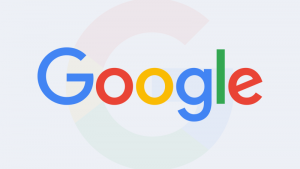You never want to ask an ad optimizer to ballpark an “average” campaign and what its average cost per acquisition (CPA) might be. Why? Because they will tell you that “it depends.”
Understanding your CPA requires knowing the nuances that surround each and every acquisition effort that your team puts forth. Your CPA for search is going to be different than social. Your retargeting CPA is often lower than your acquisition CPA. Your CPA for female audiences is likely different than male. You get the picture.
Many of our clients run their campaigns with CPA goals in mind. Doing this helps you optimize for conversions over clicks. How much do you have to spend in marketing dollars to get a paying customer? CPA tells you.
In direct response, CPA is the right metric to optimize for when:
- You want the most leads at a fixed cost (max CPA, or in this case Cost Per Lead – CPL) so that you don’t lose money and can maintain your profit margin.
- Your products/offers don’t have the same monetary value. Optimizing for a blended CPA is common for an industry like e-commerce – order values are unpredictable, so maintaining a blended CPA on sales makes it easier to track.
CPA is also the metric to go by when you want to know the quality of your conversions (which should be, um, always).
Low CPA = high conversion rate. High five.
High CPA = low conversion rate. Time to pause and test different targeting or creative.
There are times where you may think you’re doing everything right and still your CPA is not where it needs to be. Here are three strategies to test to lower your CPA:
(1) Test Your Landing Pages
You understand the importance of landing page design, what it should include (clear, concise information related to the ad, a call to action above the fold) and what it shouldn’t (interstitials, blocks, and blocks of text).
But knowing what to include or not isn’t enough if your CPA isn’t where you want it to be. You can lead a horse to water, but you can’t make it drink. Your social advertising can get your potential customers to the water, but if your landing page doesn’t convince them, they won’t drink/convert.
At this point, you need to take your landing pages a step further by A/B testing them for conversions. Your appetite for testing will inform how you go about doing it: some tweak one small element, a button color or headline, to see if it makes a difference; others reformat entire pages or destinations to test a new direction or creative theme.
In e-commerce, it’s common that our clients test multiple types of landers – product pages are obvious, but also category pages (an ad for a dress leads to a landing page showing the category page for all dresses).
Find out if your landing destination is dropping the ball – tweaking and testing them will ensure they are doing their job.
(2) Test Your Bidding Strategy
While naturally, you want to maximize conversions to get CPA down, you can also work on your bidding strategy to control the price you pay for those conversions.
You always want to make sure you’re using the bidding type that best reflects your budget and campaign needs. There are two major ways to handle bidding on Facebook: Average Cost Bidding and Maximum Cost Bidding.
We can dive deep into average cost vs. max cost bidding, but the biggest difference is when you determine whether you want a set price or give yourself room to expand with your bidding.
For Maximum Cost Bidding, you set your max bid threshold with Facebook from the start of your campaign. Facebook will only show your ads so long as you are far under your maximum bid cost. Once you start reaching your threshold, Facebook will slow down your ad delivery so that you don’t exceed your maximum bid.
Average Cost Bidding starts out the same as you select your target bid threshold, but Facebook will bid based on what the average cost is over your 1- or 7-day click window. You’ll get delivery, regardless if the cost for conversions is above your target threshold. All that matters to Facebook’s algorithm is that at the end of the window (1 or 7 days), the average cost matches the amount you previously set.
If you’ve seen success with Maximum Cost Bidding in the past, there’s no reason to rock the boat. However, it’s worth testing Average Cost Bidding if you’re looking to decrease your CPAs and you’ve tried other methods to no avail.
Average Cost Bidding exposes you to a wider audience than a maximum cost bid campaign. For some of our clients, we’ve won more auctions, we’re reaching and engaging with more of the audience, and CPAs are down.
While Average Cost Bidding may not be the answer to your CPA conundrum, it’s worth a shot to change up your bidding strategy if you’re unsure of which methods will increase your overall ROI.
(3) Test Your Audience Segments
Last, but certainly not least, you can also test your audience segments to see if that holds the key to a lower CPA.
If you’re targeting broadly through interests and segmenting by demographics, you’re only scratching the surface. To find – and then double down on – what works, you need to try a bunch of different things.
You should always be testing multiple audience segments against one another and allowing Facebook to gather insight about your audience so that they can properly serve a relevant message to the right kinds of people.
And if you’re not using Custom Audiences and Lookalikes, you’re missing out on a huge opportunity. Retargeting alone to website traffic through Custom Audiences can help you get your CPA down to where you want it, and targeting 1% Lookalikes of a Custom Audience comprised of your highest value customers/users is often a good place to start to find a more relevant audience.
For a national campaign, you want to shoot for an audience size of at least 1 million people. It’s a sufficient pool of people to target and ensures there’s a level of relevance for your offer. Facebook will rotate these audiences, showing ads based on users click behavior and will develop new audiences over time.
The more people you have to market to, the more likely you are to find audiences to convert.
Don’t get too crazy, though – technically there is such a thing as too narrow of an audience segment. It’s possible to go too far in allocating money for extremely circumscribed niche audiences. Your CPMs would go up, or you just wouldn’t spend because your targeting pool would be too small.
No matter your product or service, testing different audience segments can help you find precise segments where your advertising dollars are best spent and will work towards decreasing your CPA overall as you put more budget into those groups.
Conclusion
There’s no such thing as a one size fits all social advertising strategy, and obviously, there are tons more you can do to try to nail down a lower CPA. The overall purpose of these types of tests is to continually test different elements until you find the sweet spot for a sustainable CPA.
When you’re not seeing the same CPA results that you’re used to seeing, the suggestions above are an excellent place to start. While Facebook is a competitive marketplace, and other external factors can impact your ability to find affordable conversions consistently, you want to make sure you’ve done everything you can do first before looking at what else may be the issue.
Make sure you’re also keeping the pulse on rising costs due to seasonality, review your industry’s benchmarks, and once you find additional higher quality audiences, know that they may be more expensive to acquire.
If all of that checks out, take our suggestions above and start mapping out your testing roadmap with the necessary due diligence to bring those numbers down.
Digital & Social Articles on Business 2 Community(64)
Report Post



